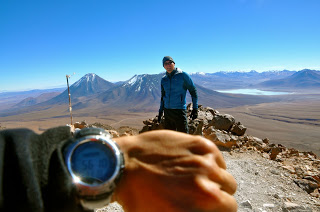A few days ago the National Geographic Adventure Blog posted a story that shared some good tips for recognizing, preventing and treating some of the adverse effects of altitude. Those tips come courtesy of the National Outdoor Leadership School (NOLS), whose members know a thing or two about dealing with altitude.
The article first discusses the six factors that have a direct affect on whether or not you’ll suffer altitude sickness. Those include things like rate of ascent, amount of altitude gained, hydration and so on. It also does a good job of breaking down the various types of altitude sickness including AMS (acute mountain sickness), HAPE (high altitude pulmonary edema) and HACE (high altitude cerebral edema). Symptoms of each are listed as are ways of treating them, although we all know that the best way to address the problem is by going to lower altitude.
Hiking and climbing in the mountains is one of the most rewarding outdoor activities I know, but if you go high enough, anyone can have issues with the altitude. Even if you’ve safely been there before without any issues you can still experience any of the three types of sickness listed above. Knowing how to recognize those symptoms and address them is an important part of safety in the mountains.
- Gear Review: The Xero Scrambler Mid is an Ultralight Hiking Shoe for Spring - March 1, 2023
- Gear Review: Yeti Roadie 48 Wheeled Cooler - August 18, 2022
- Kristin Harila Continues Pursuit of 8000-Meter Speed Record - August 16, 2022

Thanks dor sharing this.